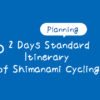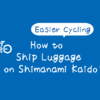Why cycling across the bridge between Onomichi and Mukaishima is not recommended
![[Title] Cycling across Onomichi Bridge from Onomichi to Mukaishima on the Shimanami Kaido](https://touring-shimanami.com/wp-content/uploads/2025/07/onomichibrdge-ogp.jpg)
The cycling route of the Shimanami Kaido between Mukaishima and Onomichi is a bit special. While bicycles are technically allowed on the Onomichi Bridge, it’s actually recommended that cyclists take a ferry instead. Why is riding a bicycle on the Onomichi Bridge not advised? This article explains the reasons, along with photos of the sidewalks and road shoulders.
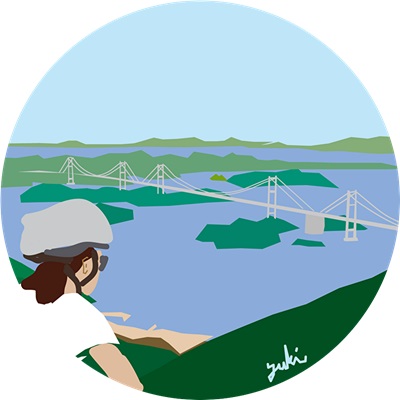
Hello, I am Kawai, a cyclist living on the Shimanami Kaido. This is a personal website where I have gathered information for travel planning. It would be great if you could visit one of the most famous cycling routes in Japan.
How to travel between Onomichi and Mukaishima
Onomichi bridge and Shin-Onomichi bridge
Most of the bridges along the world-famous Shimanami Kaido cycling route feature dedicated pedestrian and bicycle paths, or scooter lanes. This makes the route not only a convenient highway connecting Honshu and Shikoku but also an attractive destination for touring the Seto Inland Sea by bicycle or scooter.
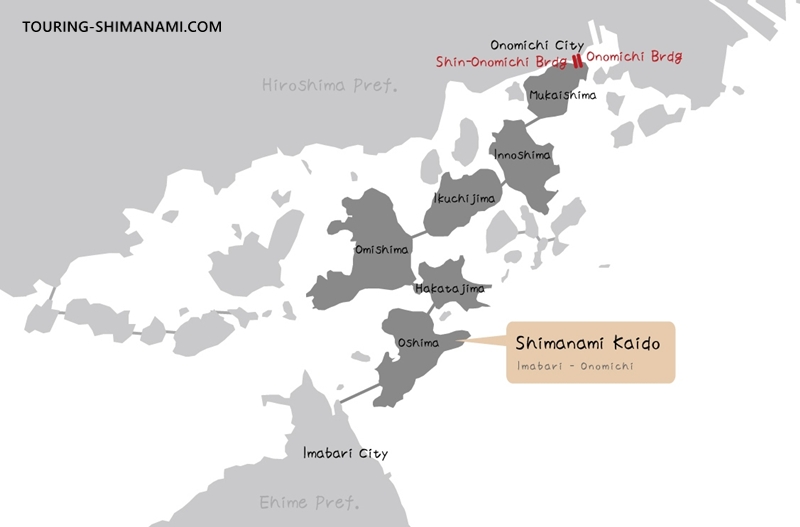
However, the Onomichi Bridge and the Shin-Onomichi Bridge, which connect Onomichi and Mukaishima, are exceptions. Travel guides issued by local governments and well-known guidebooks like “Shimanami TOSO BOOK" recommend using a ferry instead of the Onomichi Bridge when traveling by bicycle. In fact, most cyclists and travelers on the Shimanami Kaido choose to cross between Mukaishima and Onomichi by ferry.
- Why cycling across Onomichi Bridge is not recommended
- How to use the ferry between Mukaishima and Onomichi
This photo was taken from the Senkoji Park observatory and shows both the Onomichi Bridge and the Shin-Onomichi Bridge. Though it’s hard to see at first, the two bridges run side by side over the Onomichi Channel between Onomichi and Mukaishima. The Shin-Onomichi Bridge (closer to the camera), opened in 1999, is a highway bridge exclusively for motor vehicles. As with any expressway, bicycles and pedestrians are strictly prohibited.
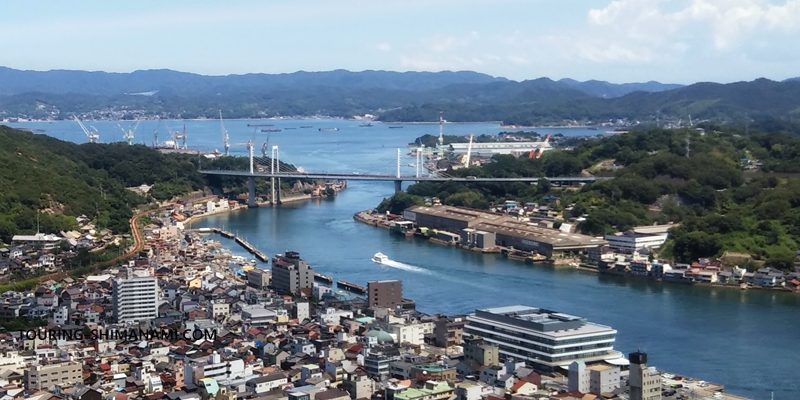
The bridge further in the background is the older Onomichi Bridge, completed in 1968. At the time, it was a toll bridge called “Onomichi Toll Road," and was considered a large cable-stayed bridge for its era. Today, it’s part of National Route 317 and free to use. Since it’s a public road, bicycles and pedestrians are allowed to cross. In fact, historical records show that the toll for pedestrians was free and bicycles were charged 10 yen—suggesting that cyclists were always expected to be among its users instead of relying solely on ferries.
| Shin-Onomichi Bridge | Onomichi Bridge | |
|---|---|---|
| Road Classification | Expressway (Nishi-Seto Expressway) | General Road (National Route 317) |
| Opened | 1999 | 1968 |
| Bicycles | Prohibited | Allowed |

Legally, it is OK for bicycles to pass through on Onomichi Bridge, but in reality….
AD (Google AdSense)
Ferry is recommended
Why cycling on the bridge is not recommended
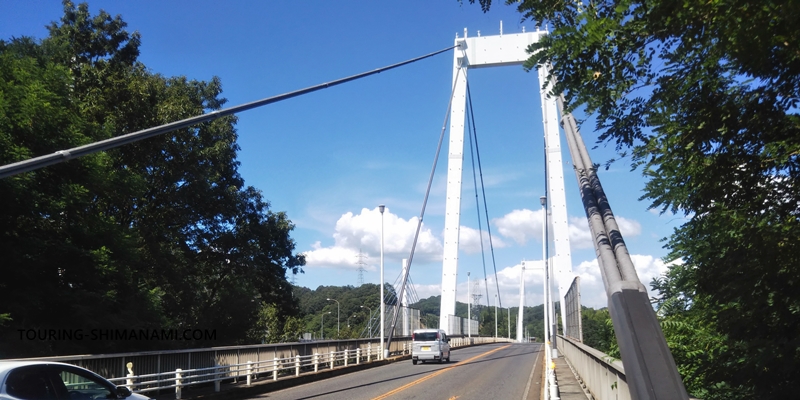
When the Onomichi Bridge opened in 1968, the idea of a Shimanami Kaido cycling route hadn’t yet been conceived. Unlike other bridges on the route, it wasn’t designed with a bike path or separate lane for cyclists and pedestrians. The bridge is narrow in many parts and has heavy vehicle traffic. That’s why, for safety reasons, it’s highly recommended to use the ferry instead of cycling across the Onomichi Bridge. In short, cycling on the bridge isn’t prohibited, but it’s strongly discouraged due to safety concerns.
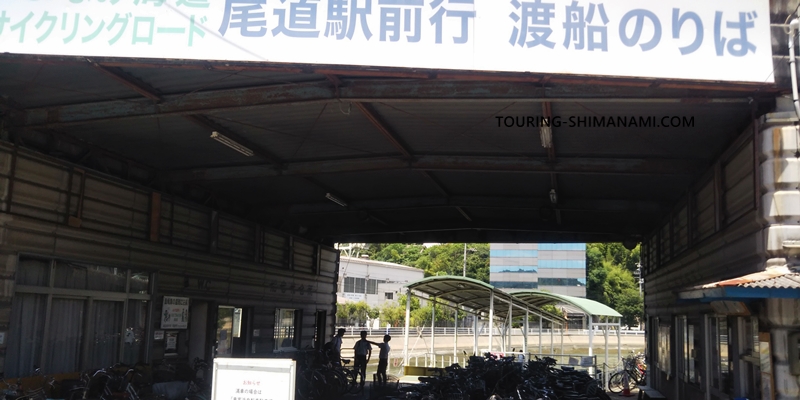
If you’re cycling from the Imabari side along the Shimanami Kaido’s blue line route markers, you’ll naturally be guided to the ferry terminal headed to Onomichi Station. So in most cases, you don’t even need to think about whether or not to enter the Onomichi Bridge. However, if you take an alternate route or aren’t aware of the ferry in advance, you might end up on the Onomichi Bridge by mistake.
The Onomichi bridge is narrow
To understand how narrow it is, just take a look at the photos. You might be surprised to learn that bicycles used to be charged 10 yen to cross this bridge—it clearly wasn’t designed with cyclists in mind.
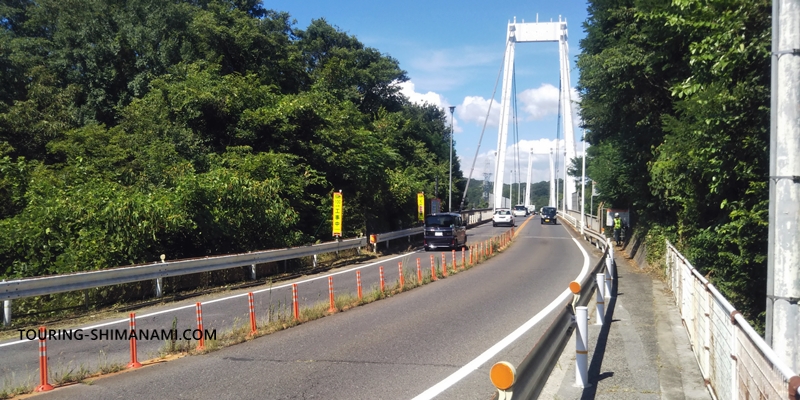
To approach the Onomichi Bridge, you’ll climb a sloped road from either the “Onomichi Bridge Entrance” intersection on National Route 2 (Onomichi side) or the “Nibangata” intersection on National Route 317 (Mukaishima side). These approach roads have almost no sidewalks, and the road shoulders are extremely narrow. The photo above shows the widest sidewalk on the Mukaishima side—it’s already tight. On the opposite side, there’s no sidewalk at all.
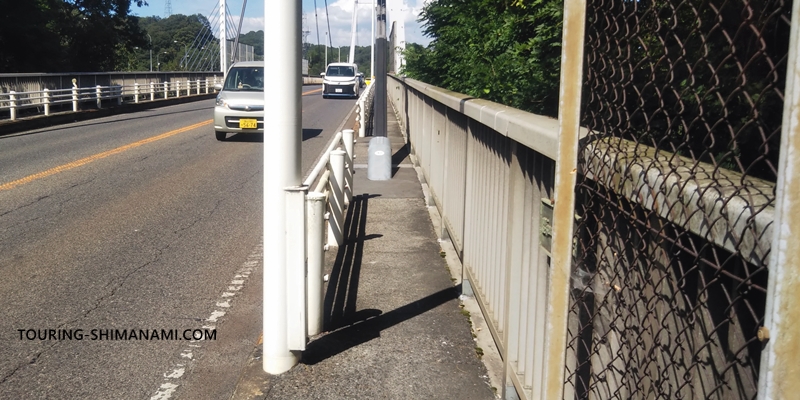
The bridge itself has sidewalks on both the left and right sides. While walking across is technically possible, it feels quite dangerous with cars passing so close. Honestly, the scariest part is the approach, where sidewalks are either missing or too narrow. During our visit, I didn’t see a single pedestrian or cyclist using the bridge—only some construction workers were present.
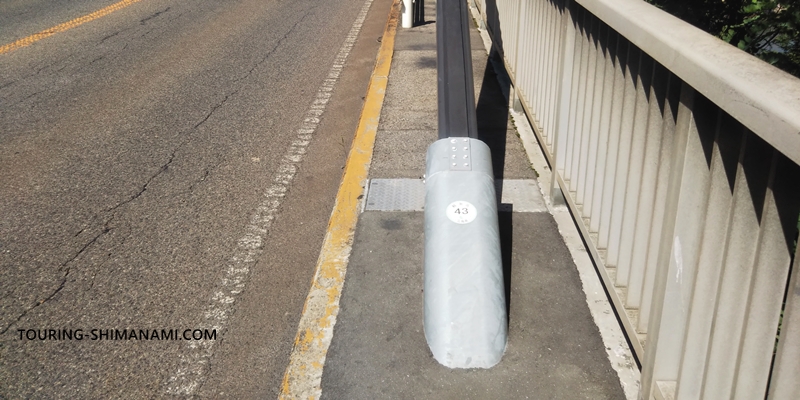
Cycling across the bridge is extremely difficult. The biggest issue is that the cables of this cable-stayed bridge run right through the middle of the sidewalks, making it very awkward—and even dangerous—for bicycles to pass through. This issue exists on both sides of the bridge. Also, between the Onomichi Bridge entrance and the bridge itself, there’s a fork leading to the National Route 2 bypass, which is a highway. You might accidentally enter the highway, especially on the Onomichi side, where the road layout is quite complex and confusing for first-time visitors.
It also increases the distance
If you’re heading from central Onomichi—where Onomichi Station and the shopping arcade are located—to Mukaishima, using the Onomichi Bridge is actually quite a detour. That’s because the bridge is located near the edge of the Onomichi Channel. The distance from Onomichi Station to the bridge is about 3.5 km.
Maps you should get in advance
“CycloTourisme Shimanami," which has been active in cycle tourism and regional promotion for nearly 20 years along the Shimanami Kaido, publishes guidebooks and maps. The map is also available in English and is extremely popular as it is the most detailed cycling-specific map in this region.
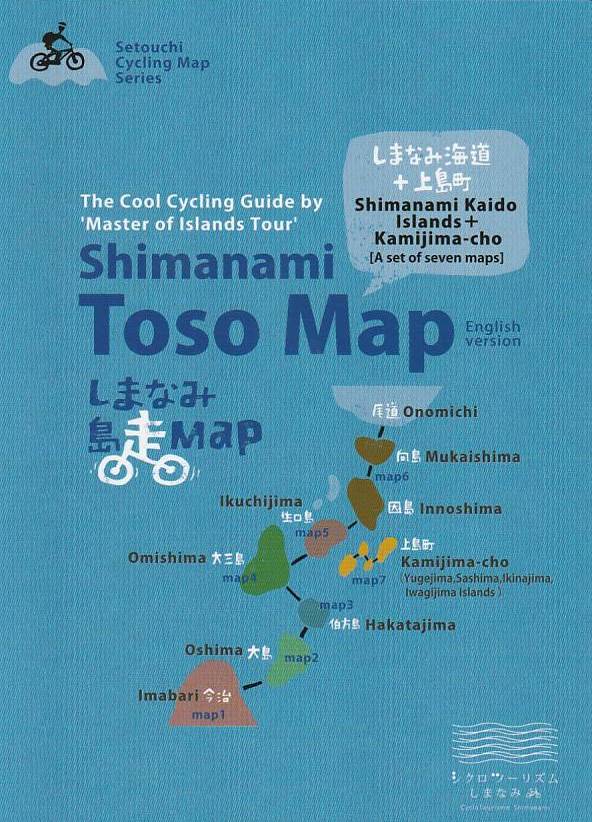
This product comes with a set of seven maps, each with a fairly detailed map for each island. I believe that getting your hands on this map will change your experience here. It can be purchased on Amazon.co.jp, and you can also buy it locally at Guesthouse CYCLONOIE in front of Imabari Station.
Take advantage of the convenient and affordable ferry
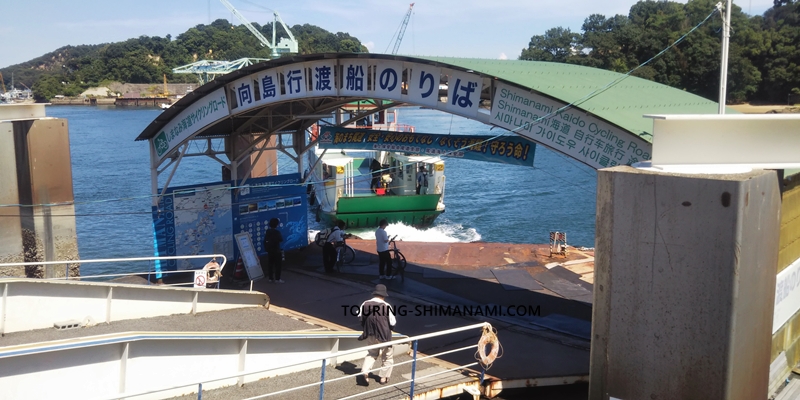
There are two ferry routes available to cross from Onomichi to Mukaishima. All of them allow bicycles, but the most convenient is the Ekimae Boat. You’ll find the terminal just to the left after exiting JR Onomichi Station and heading toward the sea. The fare is around 100 yen, including your bicycle. No tickets are needed—the crew will collect the fare onboard.
The two ferries between Onomichi and Mukaishima
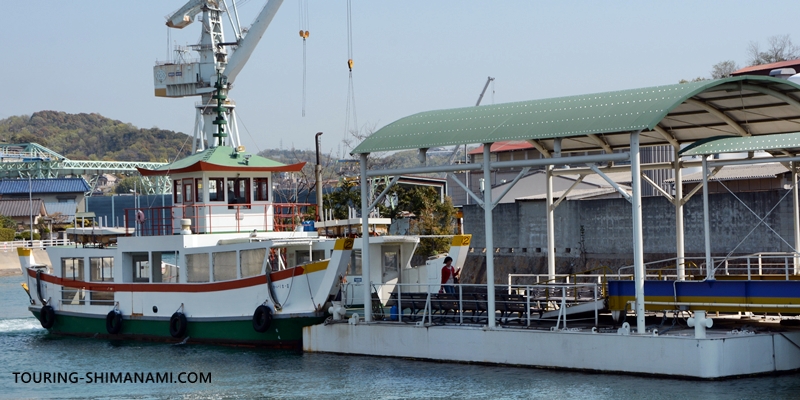
If you’re coming from the Mukaishima side, the Tomihama Pier will take you directly to Onomichi Station, assuming you’re following the Blue Line. None of the boats operate on fixed schedules, but they run frequently from early morning until evening. If you don’t see a boat when you arrive, just wait a few minutes. Taking the ferry is much safer and more relaxing than forcing your way across the Onomichi Bridge. Plus, it gives you a taste of local island life and adds charm to your journey. I highly recommend choosing the ferry.
| Ferry | Ekimae Boat | Kaneyoshi Ferry | Fukumoto Ferry |
|---|---|---|---|
| Route | In front of Station – Tomihama | Tsuchido – Kaneyoshi | Tsuchido – Koutajima |
| Notes | If you’re coming from Imabari following the main route, the Blue Line guides you to this boat. | This ferry has appeared in TV dramas and movies. It’s the farthest from Onomichi Station. | Note: Fukumoto Ferry service will end in March 2025. |
AD (Google AdSense)
This page explained why the Onomichi Bridge on the Shimanami Kaido is not recommended for cyclists. For more detailed information about cycling the Shimanami Kaido, please visit the link below.
